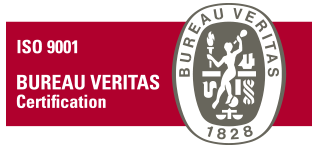Reinforced Composite Parts: Selecting the Right Fibre

We recently delved into choosing between Metal and Composite and if you decided on composite, you might wonder which reinforcing fibre is going to be best.
When you’re selecting reinforcing fibres for a Markforged composite print, you need to consider the loading conditions, temperature, failure behaviour, and material cost.
Which type of fibre will give you the best outcome for your application?
Let’s cover how to choose the right fibre and investigate the key differences between the different fibres.
Diving Deep into Fibre Reinforcement
Types of Fibre

What are their basic differences?
Tensile strength is the first difference we can look at:

When it comes to choosing the right fibre, the two most common are carbon fibre and fibreglass.
Fibreglass is about half the strength of carbon fibre and also half the cost. It’s typically the preferred choice of people aiming for a lower cost-per-part, and looking at its mechanical performance, its ideal loading type is intermittent loading. Intermittent loading is best suited for parts that will be cycled through a load being applied, removed, and then applied again. If this sounds like your application, you will benefit more from having fibreglass than carbon fibre.
Carbon fibre is the most popular reinforcing material due to its high strength-to-weight ratio. With carbon fibre throughout a part, we can achieve strength comparable to Aluminium, making it an attractive solution for metal replacement in parts that require high strength.
So when would you use the other two?
HSHT Fibreglass stands for high-strength, high-temperature and is best selected for applications where the part will be subjected to temperatures above 100 degrees Celsius. 100 degrees is where the other three fibres start to deflect due to the heat, and HSHT fibreglass maintains a very impressive strength as you can see in the chart above.
Kevlar, as you might guess, is great at impact absorption – a full video of below is available here comparing Kevlar-reinforced onyx with other common 3D printed materials.

Now you’ve chosen the right fibre, we’ve included some handy fibre printing strategies that can inform how your design looks or will be printed by us.
What should engineers keep in mind when designing for fibre?
Specialised reinforcement strategies
If you need to address specific loading conditions, you can employ different tactics to strengthen specific areas, reinforce certain part sections, or control fibre placement. Below are some additional strategies you can implement on your part.
Note: these tips reference various reinforcing methods from Markforged’s Eiger slicing platform, which we use for our additive manufacturing services. We can do this reinforcing for you.
1. Fibre panel striping

For increased bending strength on the XY plane, we can add “stripes” of isotropic fibre across multiple Z layers. This is most effective with thicker parts that have a fairly consistent or symmetrical cross-section because fibre striping creates multiple superimposed sandwich panels to further reinforce a part in bending.
2. Directing fibre with ribs

We can route fibre in specific directions with reinforced ribs or cutouts that follow load paths from forces applied to your part. We can force the fibre to follow these load paths by applying concentric fibre to reinforce the cutouts or walls.
3. Using fibre angles to direct fibres

We can “zig-zag” isotropic fibres in a certain direction. If you have the fibres routed in a specific direction to better align with the forces being applied to your part, you can manipulate the angle of this pattern. The default setting rotates the fill pattern by 45° each layer, but we can change that by putting a specific angle or pattern of angles for any layer, any group of layers, or across the entire part.
4. Achieving Z-axis strength

Clever design and reinforcement strategies allow you to achieve greater strength on multiple axes. Running a bolt through your part with fibre reinforcing the compressed surfaces will strengthen the part and prevent shear or tensile forces from splitting the part along layer lines. We can reinforce the area around the bolt with inner hole concentric fibres so that any of those forces distribute to the fibre in the form of bending forces.
The right fibre for part success
Fibre is an important consideration when looking to manufacture parts at SQP Engineering. If in doubt, carbon fibre is always a good bet, but with this guide, you can make more informed choices, to get the best performance out of your parts.
Whether it’s a functional prototype, an end-use part for the mines, or a custom tool, it has the best chance of success if the fibre is well-matched to the application. If you make the right decision from the beginning, you’ll end up with the perfect part the first time around.
Still not sure? No worries. We see plenty of applications daily and are happy to recommend something to suit your part. Get in touch, and we’ll set up a consultation.


